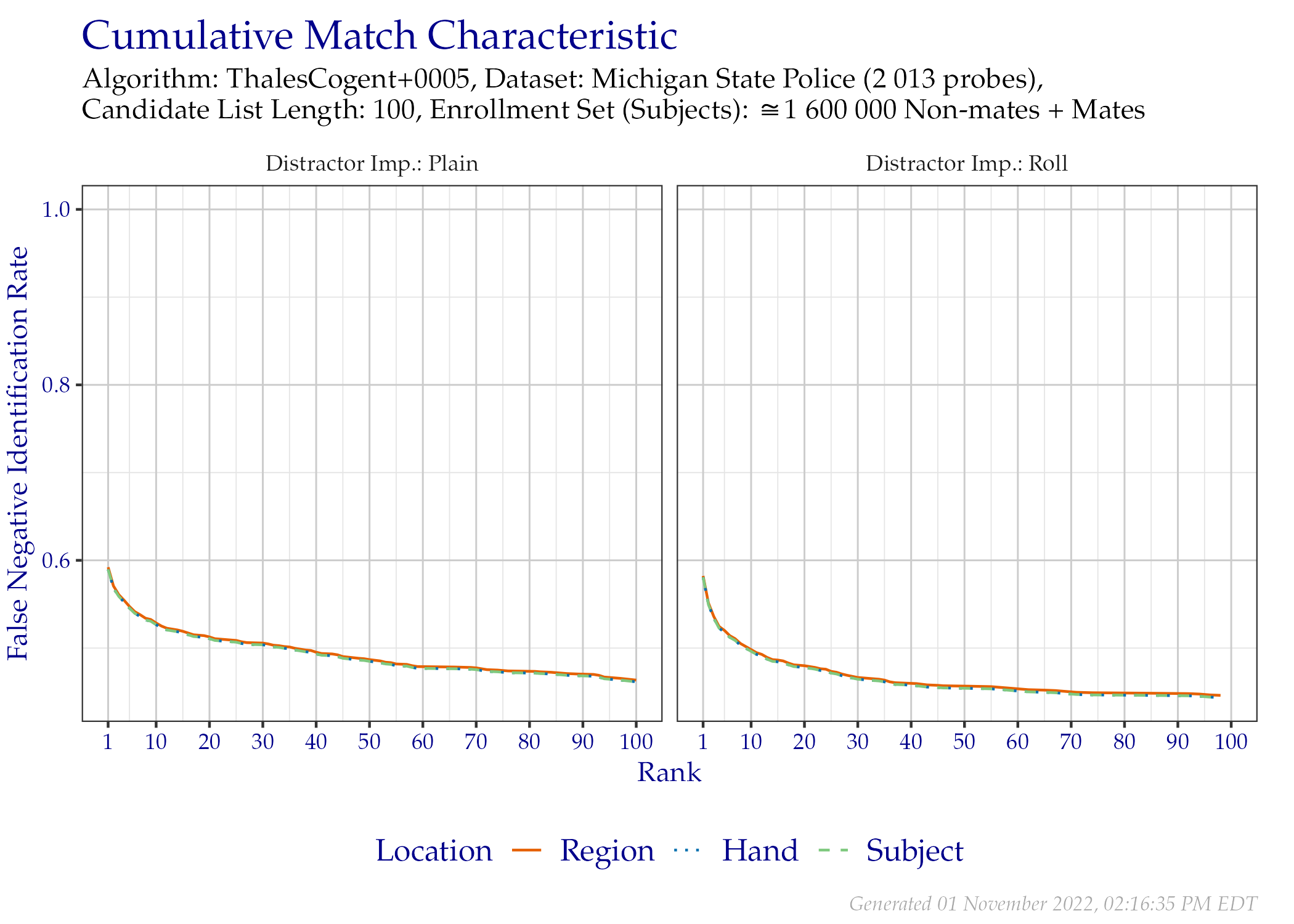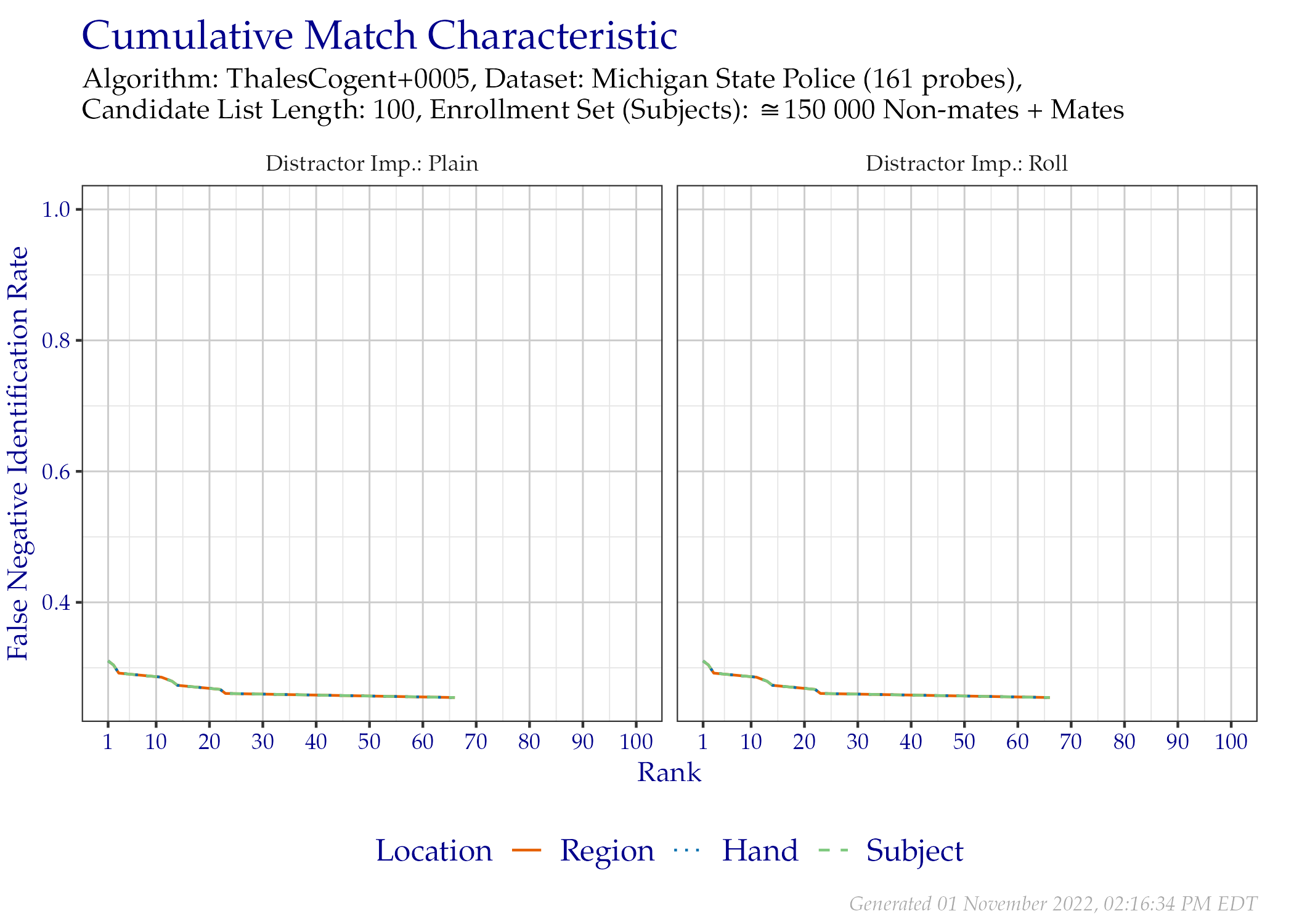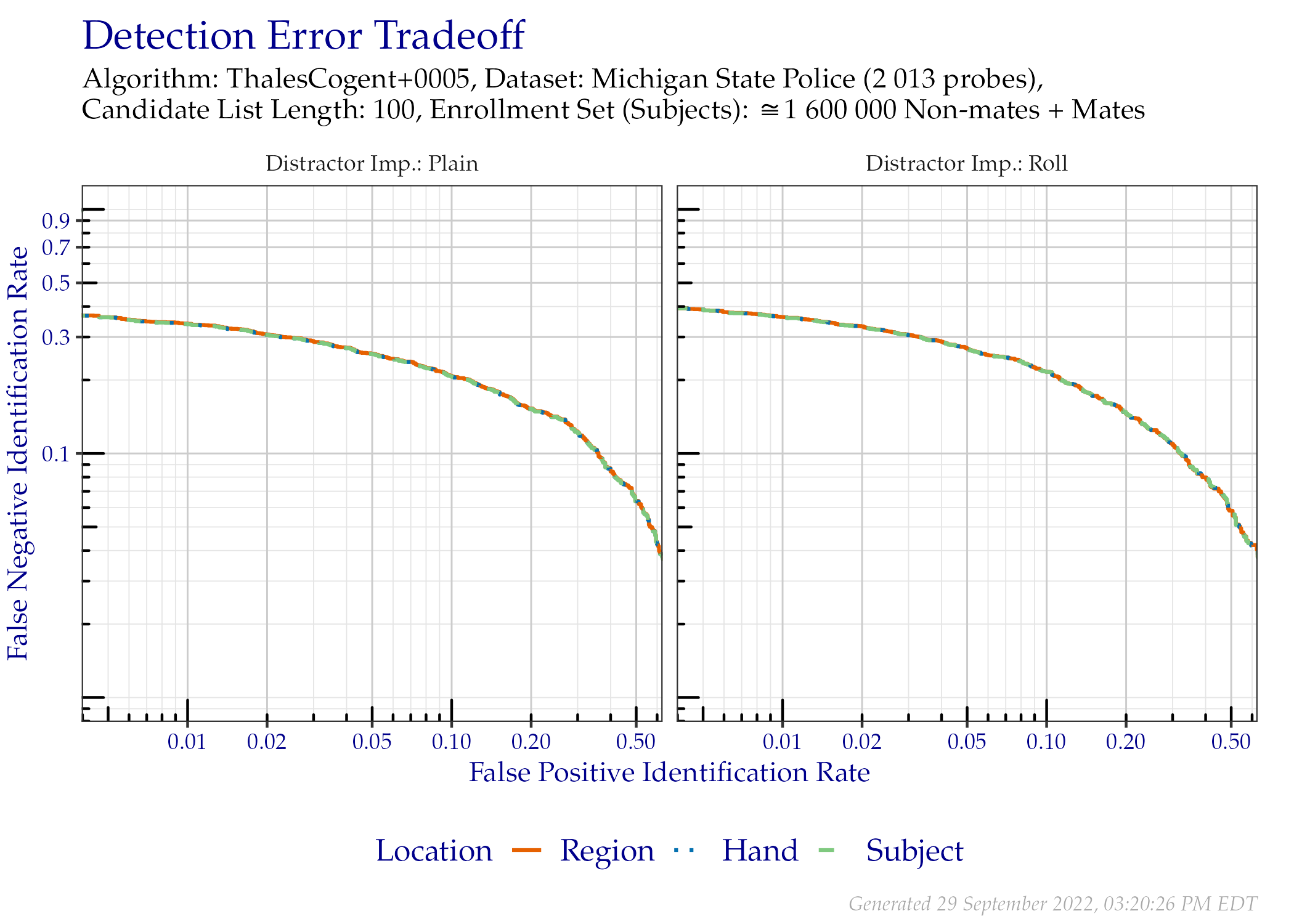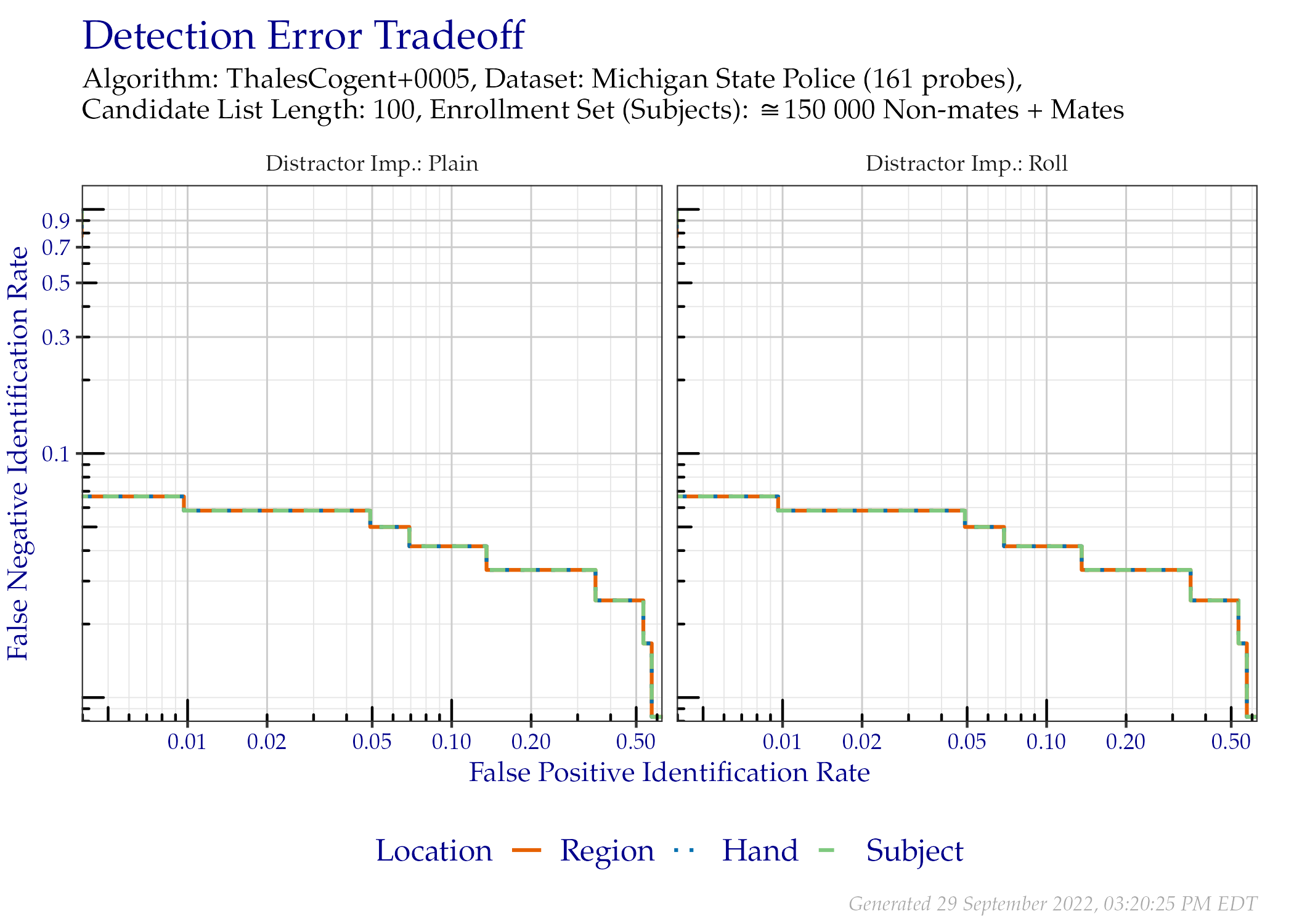7 Michigan State Police
The results of Section 7 are based on searches of the sequestered dataset Michigan State Police. This dataset consist of of 2 174 operational latent probes. No EFS data was provided for probes or mated exemplars.
All probes searched were a single friction ridge sample from somewhere on the hand. Because the ELFT API indicates to implementations whether an image comes from the distal or palm region, analysis is separated between the two.
Note: While NIST biometric technology evaluations typically use sequestered law enforcement data, a literature search indicates that this collection of data may have been supplied to other research organizations that are not subject to the same strict sequestration policies as NIST.
7.1 Failures
Table 7.1 shows the number of failures to create templates. Table 7.2 shows the number of failures to produce a candidate list.
| Image Type | Content | Distal Failures | Palm Failures | Attempts |
|---|---|---|---|---|
| Exemplar | Image | 0 | 0 | 1 365 |
| Probe | Image | 9 | 3 | 2 174 |
| Distractor Imp. | Probe Content | Distal Failures | Palm Failures | Attempts |
|---|---|---|---|---|
| Plain | Image | 9 | 3 | 2 174 |
| Roll | Image | 9 | 3 | 2 174 |
7.2 Distal Region CMC
The CMC in Figure 7.1 shows results from only the distal phalanx probes from Michigan State Police.

Figure 7.1: CMC when searching Michigan State Police distal phalanx probes, faceted by distractor impression type.
The values in Table 7.3 correspond to Figure 7.1.
| Distractor Imp. | Probe Content | Rank 1 | Rank ≤ 50 | Rank ≤ 100 |
|---|---|---|---|---|
| Plain | Image | 0.5922 | 0.4868 | 0.4635 |
| Roll | Image | 0.5822 | 0.4570 | 0.4461 |
7.3 Palm Region CMC
The CMC in Figure 7.2 shows results from only the palm probes from Michigan State Police.

Figure 7.2: CMC when searching Michigan State Police palm probes, faceted by distractor impression type.
The values in Table 7.4 correspond to Figure 7.2.
| Distractor Imp. | Probe Content | Rank 1 | Rank ≤ 50 | Rank ≤ 100 |
|---|---|---|---|---|
| Plain | Image | 0.3106 | 0.2609 | 0.2547 |
| Roll | Image | 0.3106 | 0.2609 | 0.2547 |
7.4 Distal Region DET
The DET in Figure 7.3 shows results from only the distal phalanx probes from Michigan State Police.

Figure 7.3: DET when searching Michigan State Police distal phalanx probes, faceted by distractor impression type.
The values in Table 7.5 correspond to Figure 7.3.
| Distractor Imp. | Probe Content | FPIR = 0.01 | FPIR = 0.02 | FPIR = 0.1 |
|---|---|---|---|---|
| Plain | Image | 0.3398 | 0.3074 | 0.2083 |
| Roll | Image | 0.3623 | 0.3318 | 0.2161 |
7.5 Palm Region DET
The DET in Figure 7.4 shows results from only the palm probes from Michigan State Police.

Figure 7.4: DET when searching Michigan State Police palm probes, faceted by distractor impression type.
The values in Table 7.6 correspond to Figure 7.4.
| Distractor Imp. | Probe Content | FPIR = 0.01 | FPIR = 0.02 | FPIR = 0.1 |
|---|---|---|---|---|
| Plain | Image | 0.0583 | 0.0583 | 0.0417 |
| Roll | Image | 0.0583 | 0.0583 | 0.0417 |